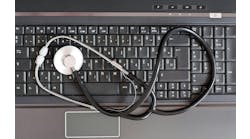In much the same way as dogs can be trained to detect some diseases through their keen sense of smell, technology can help create electronic devices capable of performing this same task. This is what a team of researchers from the Gandia campus of Valencia’s Polytechnic University and the La Fe Health Investigation Institute have achieved, developing a prototype of an electronic nose that can distinguish between patients with Crohn’s disease and ulcerative colitis.
The device—named Moosy 32 eNose—can also tell whether the disease is active, with close to 90% accuracy. According to the researchers, “in the future this type of equipment could be available for digestive system specialists who could, thanks to a simple stool analysis which takes three minutes, determine the state of the patient.”
It is common to use invasive tests to diagnose and evaluate inflammatory activity as a result of colon-related illnesses, such as Crohn’s disease and ulcerative colitis, both classified as inflammatory bowel diseases (IBD). With the developed prototype, the UPV and IIS La Fe teams want to contribute to the creation of non-invasive diagnosing systems. It is believed that as many as 200,000 people currently suffer from these illnesses in Spain and the rise in incidence continues to increase annually by over 3%.
The nose designed by the Valencian researchers can detect volatile organic compounds which act as diagnostic markers or to reveal the intensity level of the disease’s activity.
Researchers have performed tests with 445 samples and have obtained positive results. “Results of the investigation are positive; however, it is paramount to continue working to improve the detection algorithms,” adds José Pelegrí, who works for the Sensors and Magnetism group within the Gandia Campus Investigation Institute, IGIC.
The system is being tested for further medical uses, such as detecting prostate cancer. Other studies, with positive results, are also being performed such as detecting the microbial contamination of water or determining the maturity level of fruit, which could have key applications within the agro-food industry.

